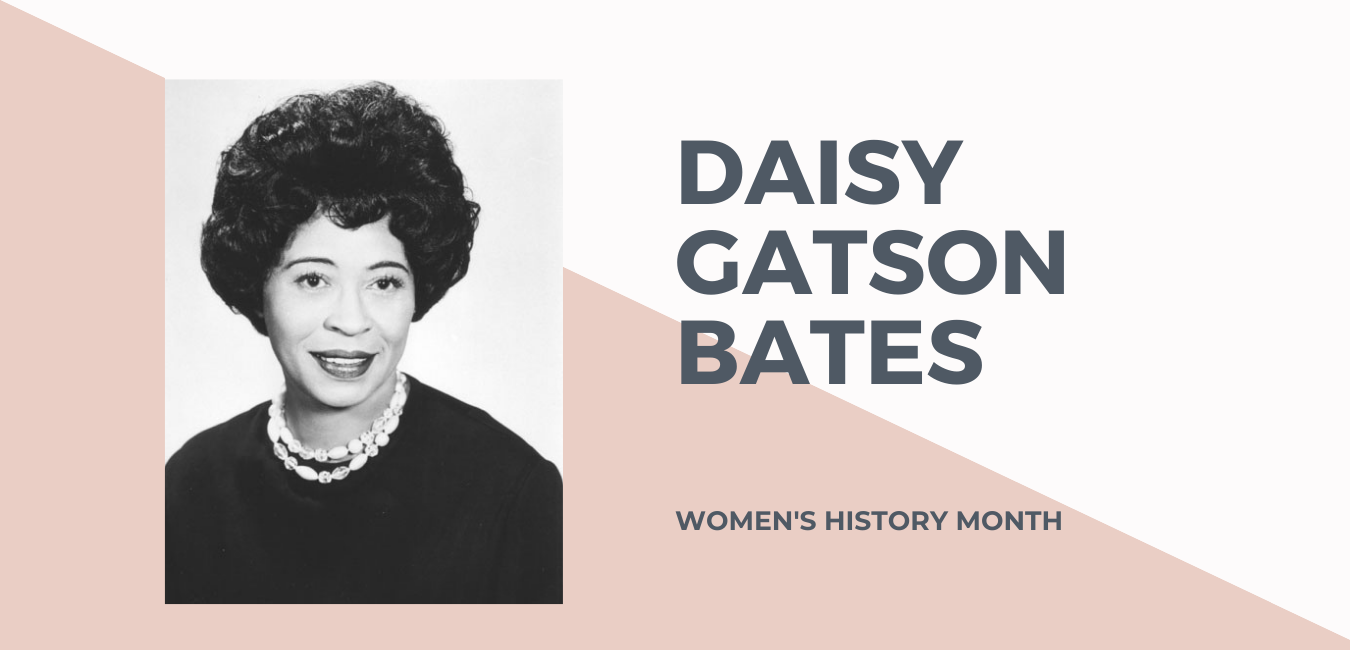
Born: November 11, 1914 in Huttig, Arkansas
Died: November 4, 1999 in Little Rock, Arkansas
Bio: Daisy Lee Gatson Bates was a mentor to the Little Rock Nine, the African American students who integrated Central High School in Little Rock in 1957. She and the Little Rock Nine gained national and international recognition for their courage and persistence during the desegregation of Central High when Governor Orval Faubus ordered members of the Arkansas National Guard to prevent the entry of Black students. She and her husband published the Arkansas State Press, a newspaper dealing primarily with civil rights and other issues in the Black community.
In May 2000, a crowd of more than 2,000 gathered in Robinson Auditorium in Little Rock to honor her memory. At this event, President Bill Clinton acknowledged her achievements, comparing her to a diamond that gets “chipped away in form and shines more brightly.” In 2001, the Arkansas legislature enacted a provision that recognizes the third Monday in February as “Daisy Gatson Bates Day.” There are streets in various towns in Arkansas, including Little Rock, which bear her name. In February 2012, PBS broadcast the documentary Daisy Bates: First Lady of Little Rock. In 2019, the Arkansas General Assembly passed a law to replace the statues of Uriah M. Rose and James P. Clarke in the National Statuary Hall Collection at the U.S. Capitol with statues of Daisy Bates and Johnny Cash.
You can learn more about the life of Daisy Gatson Bates at the Encyclopedia of Arkansas.

